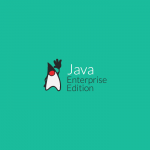Stateful session beans are appropriate if any of the following conditions are true.
- The bean’s state represents the interaction between the bean and a specific client.
- The bean needs to hold information about the client across method invocations.
- The bean mediates between the client and the other components of the application, presenting a simplified view to the client.
- Behind the scenes, the bean manages the work flow of several enterprise beans.
To improve performance, you might choose a stateless session bean if it has any of these traits.
- The bean’s state has no data for a specific client.
- In a single method invocation, the bean performs a generic task for all clients. For example, you might use a stateless session bean to send an email that confirms an online order.
- The bean implements a web service.
Singleton session beans are appropriate in the following circumstances.
- State needs to be shared across the application.
- A single enterprise bean needs to be accessed by multiple threads concurrently.
- The application needs an enterprise bean to perform tasks upon application startup and shutdown.
- The bean implements a web service.
A session bean must be annotated or denoted in the deployment descriptor as a stateless or stateful or singleton session bean. These annotations are component-defining annotations and are applied to the bean class.

